[Mr. Sai] Find the "E.T. Those" in the universe with ET | Mr. Sai Astronomy
Author:Shanghai Observatory of China Time:2022.07.14


Does the universe really have a wise life like E.T.? How should we look for them? Picture source: movie "E.T." stills
Introduction:
In the past few weeks, we have pushed articles such as "Seven Brothers of Gourds" in the planets of the planet and their small universe "," End of the End of the World: Find "Earth 2.0" "and other articles. And the various methods and corresponding plans and projects of super earth, even the Earth 2.0. Today, we will introduce another path to find exterior planets and extraterrestrial lives, and its name abbreviation is the same as alien creatures in the movie 40 years ago. In this issue of the astronomy, let's see how scientists use ET satellites to find E.T. in the universe.
Written article | Ge Jian, Zhang Hui, Deng Hongping (Shanghai Observatory)
Responsible editor | Wang Xinxin, Lu Haoran
"Are we alone?"
The booming motivation of human beings originated from their own curiosity, and the great heroes who explore the unknown world are great because they will not only keep curiosity in fantasy, but bravely turn it into reality. Throughout the ages, with the changes in the universe of the human universe, the ancestors of the past generations have diligently considering the position of human beings in the universe.
The development of science (especially astronomy) not only promotes the objective understanding of the universe, but also makes humans realize that they are not special -Earth (or solar, galaxy) is not the center of the universe, and human beings have no reason to be in the universe. The only wisdom life. "Are We Alone?" This is a question of the history of the development of human civilization. But at the level of science and technology today, maybe the correct question should be "where are they?"-The famous physicist Enrico Fermi (1901-1954) asked (also known as "Fermi Paradox").
According to Dr. Fermi's estimation of the order of order, there will be nearly one million civilizations in the galaxy alone. If half of the civilization exceeds the earth, it should not be difficult to find the traces of wisdom in the Milky Way. However, to this day, human beings have never discovered the true credible evidence existence of no local civilization, not to mention the smart life that has real contact with humans (such as E.T. The Extra-Terrestric).
There are a lot of explanations to Fermi paradox, and I can't repeat it here. A simple review of many explanations will find that before human beings can only passively wait for (receiving) the signal issued by out -of -abroad civilization. Any information. However, there is an old saying in China that "I can't run the monk to run the temple." Thanks to modern detection technology, especially the rapid development of spatial technology, human beings can now actively search for planets that can bred land and support the development of smart civilization. We call it -Earth 2.0.
Since so far, human beings have the only sample of the earth (the earth 2.0 in the real sense has not been found in the observation), so it is uncertain about the measurement rate of the earth in the universe, and its value is divergent internationally. figure 1). Moreover, not only can we not answer whether we are the only life in the universe, but we don't know how common the earth is in the universe. The core goal of the National Aeronautics Aviation Administration (NASA) in 2009 is the core goal of the scientific satellite satellite in Kepler is to find several Earth 2.0 to answer these basic questions.
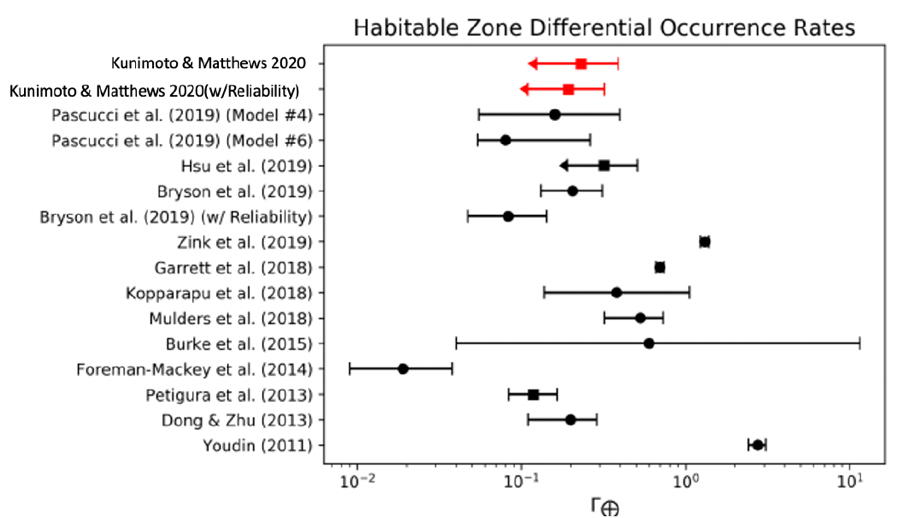
Figure 1: The current results of the earth's appearance rate have great uncertainty. Picture source: reference [1]
However, unfortunately, due to the various reasons such as the instrument (successively failed flywheels and high instrument noise) and science (exceeding the expected star activity noise level), although the Kepler satellite has found a new planet population: a large number of sizes aggressive The Asian Neptune and Super Earth, between the Neptune and the Earth, and the positions of the Locomoto, but failed to find the earth 2.0. Therefore, in order to answer the basic questions that these humans are most concerned about and find other lives in the universe, and even smart civilization, we urgently need a new space scientific satellite to complete the scientific tasks that Kepler have not completed and have great historical significance. Essence
The Earth 2.0 Space Tour (referred to as ET) supported by the Chinese Academy of Sciences Space Leading Background Research is to use relatively mature space Lingxing method to search for the Earth 2.0 space satellite project (Figure 2). ET's core goal is to discover the first Earth 2.0 with great historical significance. At the same time, through 4 years of search, try to discover 10-20 Earth 2.0 (Figure 3), and to accurately determine the emergence rate of planets such as the earth for the first time for the first time. Essence This key information is one of the basis for human estimation of the number of extraterrestrial lives and even the number of exterior civilizations in the Milky Way. Therefore, the precise determination of the emergence rate of the earth will also be a milestone discovery.
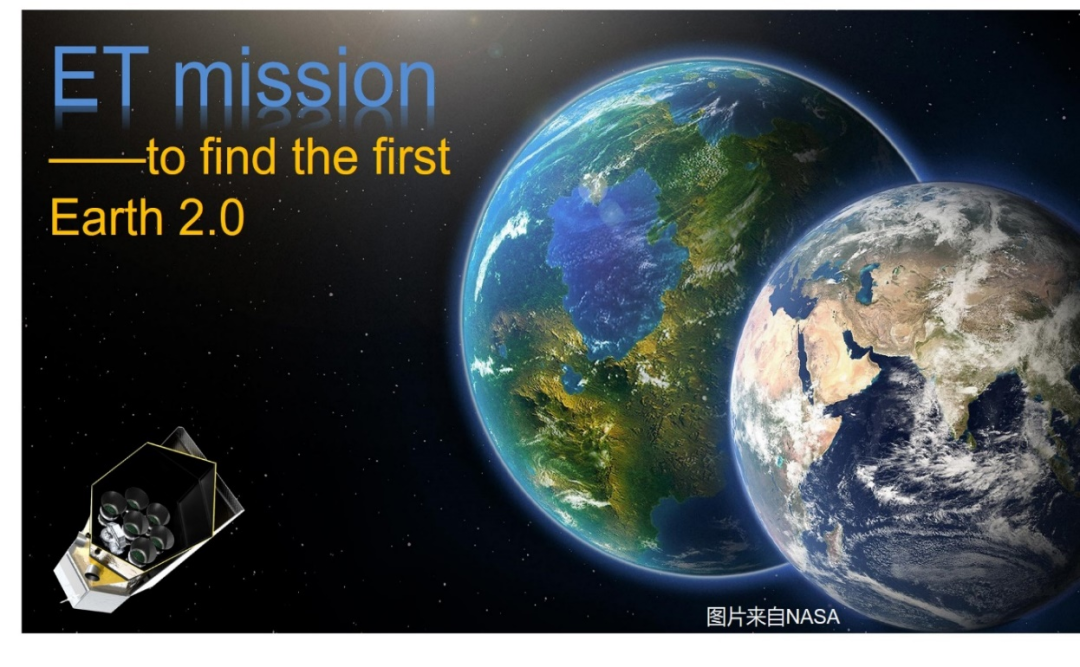
Figure 2: The core scientific goal of the Earth 2.0 Sky Tour Space Satellite (ET) is to search for the planets of the Earth 2.0 through the relatively mature Lingxing Method of the solar star. Picture source: NASA
What is Earth 2.0?
In order to find such a second "earth", we must first think about what the earth is unique so that we can give birth to life and support the reproduction and evolution of life in a long enough time. First of all, the earth is running around a relatively mild star, and the planet environment will not be excessively invaded by the X -rays and ultraviolet rays brought by the frequent surface of the star surface, making it difficult for life to produce and survive. Second, the distance between the earth and the stars is appropriate. Make the surface of the planet (livable band) of liquid water (livable band); third, the surface of the earth is rocky, which can support the stable development and evolution of life. At the same time The material can be circulated in an orderly manner; in the end, the earth also has suitable atmospheric components (such as water, oxygen, and oxygen is also one of the identifiers of creatures).
Based on the understanding and evolution of life on the earth, the planets of the Earth 2.0 are distributed in the livable belt, around the solar star, and the size of the earth (about 0.8-1.25 Earth radius and 0.5-2 Earth quality ) Quite planet. Because they are very similar to the environment of the earth, if there is life on Earth 2.0, it will be most likely evolved or even similar to human civilization (at least communicating).
In daily life, we are often brushed by news such as "scientists discover new livable planets", but in fact, the livable planets in these reports are far from the real Earth 2.0. The livable planets of these reports are either too large (such as the super earth in the livable zone), or they are red dwarfs around small quality. For these super Earth with more than 2 times the quality of the earth, most of their surfaces are covered with volcanic magma due to too much gravity, and most of them are rich in hydrogen -rich atmosphere, which is not conducive to the generation and evolution of life.
Similarly, for planets and quality of the earth and quality in a livable belt around small quality red dwarf stars, their environment is far from the earth, which is not conducive to life survival. Most of the red dwarfs have strong spots. They often occur 10-1000 times the strength of the solar, containing a large amount of X-rays that are harmful to life and the ultraviolet. It can be separated from the atmosphere of the planet to gradually peel off the planet. Not only that, the narrow red dwarf livable band is also very close to the main star. Among them, the planets will be affected by a strong tide, resulting in their surface locked, so that only one of them will always be facing the stars, the planet facing the star’s one Most of the surface is hot and dry, and the other side may be cold and humid. The internal activities and atmospheric circulation of the planet are seriously affected by this tidal lock, causing a very different environment for the earth (Figure 3). These will be very unfavorable to the survival of life.
Figure 3: At present, a total of ten planets in the "livable band" of the earth are found, but they all revolve around active red dwarfs with a small cycle. Living is uncertain. ET Satellite aims to use Lingxing to explore planets of the earth size in the livable belt of the sun stars, and to detect more planets with farther the star and even lonely and wandering planets. Picture source: reference [4]
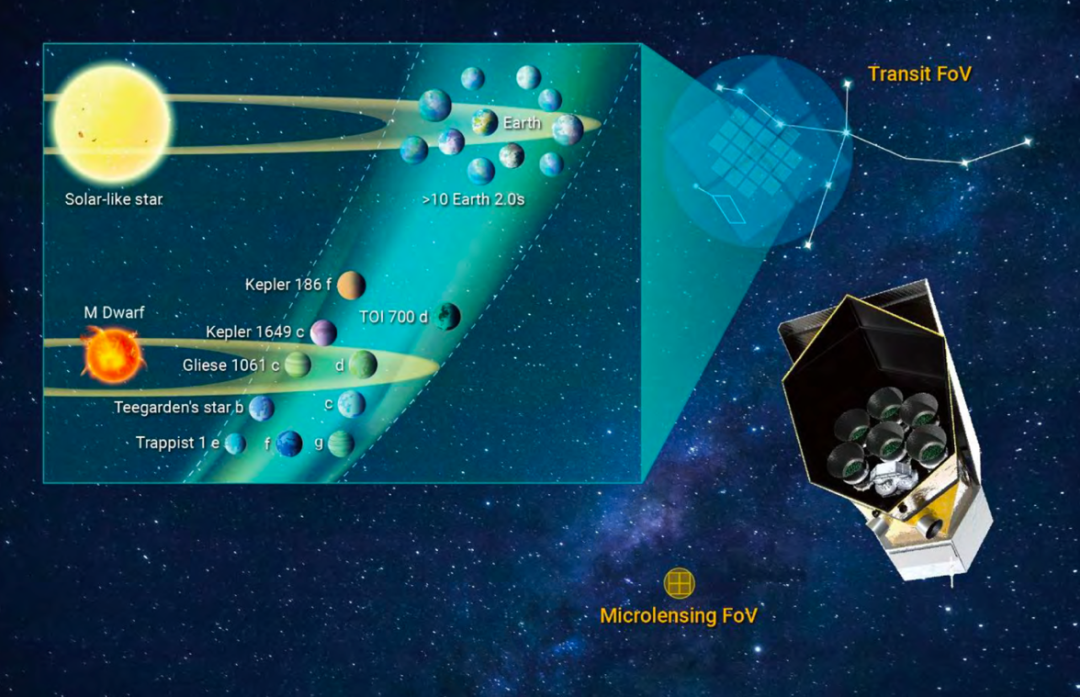
Looking for the confirmation process of Earth 2.0
In order to search and determine the earth 2.0 suitable for the survival and reproduction of life, we need to determine whether its stars are relatively quiet solar stars, whether the planet is in a livable zone, whether its size/quality is similar to the earth, and whether there is a suitable atmosphere Key factors such as environment. We need to complete the measurement of four key physical quantities: the track cycle, size (radius), quality and atmospheric components of the planet. Among them, the size and quality of the planet are equally important, which is indispensable for inferring planet structure and internal composition, such as Trappies-1 E, F, G planet [2]. Only those candidates approaching the earth on these four dimensions are the real Earth 2.0, providing candidate goals for future exploration of extraterrestrial lives, and laid a solid foundation for studying extraterritical life.
At present, the main planet detection methods include Lingxing method, viewing speed method, micro -lens lens method, direct imaging method, and celestial measurement method (sorted by the number of planets detected). Among them, the Lingxing method passes through the front of the star from the front of the star, covering the periodic brightness attenuation caused by the stars to determine the size and cycle of the planet. So far, Lingxing detection has discovered about 70%of the known more than 5,000 outer planets, and planets of the earth size of 6/10 in Figure 3. Methods.
The internationally operated space searching for foreign planets all use mature Lingxing methods, such as European Corot and CHEOPS satellites, as well as the American Kepler and TESS satellites. At the same time, the Plato satellite planned by the European Space Administration in 2026 also adopts the outer planet of the Lingxing Law search and detection department. At the beginning of the 21st century, the United States considered using the Sim Lite satellite based on the spatial celestial measurement method to search for the neighboring layman star, but this plan was canceled because of its challenging technology and expensive cost [6]. This plan is a Roman satellite based on mature space micro -lens lens. Micro -induced lens method can detect all kinds of cold star stars in Mars orbit and Neptune, as well as the advantages of searching and detecting stray planets.
Various detection methods have their own advantages and deficiencies. Only with each other can it be fully portrayed to the characteristics of the planet found, confirming whether the planet is similar to the earth, and complete the difficult task of the earth 2.0 confirmation. For example, through the high -precision space Lingxing observation, several Earth 2.0 candidates are found, and the quality of the planet is measured by the high -precision viewing of the high -precision view of the high -precision view of the large telescope on the ground. And this to infer the surface and internal structure of the planet to determine the livable environment of the planet. At the same time, through the ground and space large telescope (such as the 30 -meter telescope TMT and the James Weber space telescope JWST), the spectral spectrum of Ling Xing can be measured, analyzing the atmospheric components of the planet, and finding the traces of life (see Figure 4 To. Therefore, the space Lingxing method is very effective in combining the viewing speed and spectral observation of the ground and space. It can be competent to confirm the arduous tasks of the earth 2.0 and search for signs of life. However, the high probability (99.5%) of the Earth 2.0 candidate discovered by the view of the speed or celestial body will not happen between the stars and the observer, nor will it occur. Therefore, these candidates cannot measure the size and density of the planet through follow -up observation (using the current technical means), and it is impossible to determine the planet's atmospheric components by transmitting spectrals. Therefore, these two methods are difficult to confirm the earth 2.0, and it is not possible to search for signs of life.
Build a complete outer planetary group
Figure 4: Ling Xingfa discovered the planet by detecting the brightness attenuation caused by the planet's cover, and confirmed their size and track cycle. Planet gravitation will cause the main star shaking (dotted line track). We can also indirectly infer the quality of the planet by measuring the stars' position (celestial body measurement) or the star spectrum offset (see the speed method). However, only the planets that occur in Lingxing (the observer and the planet's orbit are almost co -noodles) can the radius measurement and atmospheric composition analysis. Note: In the figure, the two planets that indicate stars represent different methods of different methods do not belong to the same line of star system. Photo source: Author's picture, Credit: Fang Tong
ET Satellite's Lingxing Telescope will stare at the Kepler satellite and its 500 square meters of heaven near the heavenly area near the sky and red dwarfs. It is expected that nearly 30,000 outer planets are expected, which is 6 times that of the current number. This will greatly expand the parameter space of the external planet (Figure 5). These new planet samples include about 5,000 planets [3/4/5], which are about 15 times that of the current number of planets known as planets, of which about 10-20 first discovered Earth 2.0 candidates. The follow -up speed and Lingxing spectrum observation of the candidates of these Earth 2.0 will help confirm the true Earth 2.0, and take the key and indispensable step for finding extraterrestrial life.
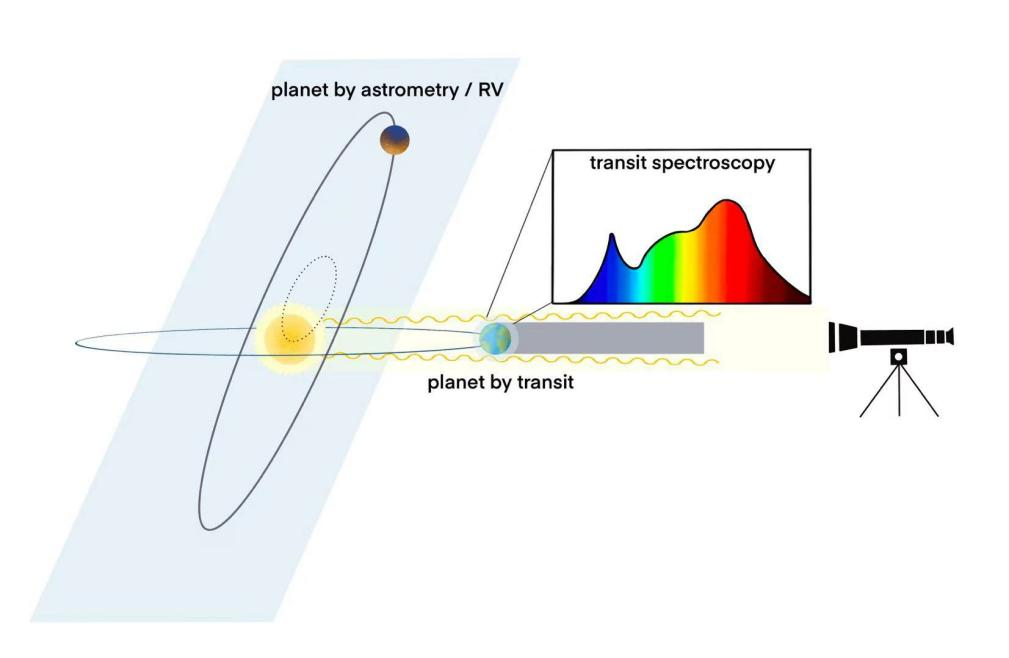
The confirmation of Earth 2.0 will undoubtedly be the historical monument to explore the universe, but to understand the characteristics of the earth or Earth 2.0, we need to understand how the entire population of the planet is distributed, how to form, and how they are subject to other factors (such as star characteristics, environment, And the influence of other types of planets). Lingxing Satellite is more likely to detect planets with shorter cycles. In order to better understand the nature of long-term planets, the ET satellite is also equipped with a micro-induced lens telescope. By analyzing the light of the star-planet gravitational lens on the brightness of the background star brightness, Change the curve, find a long cycle, and even the wandering planet in the universe.
ET's micro -induced lens patrol is expected to detect about 400 cold planets and 600 wandering planets, of which about 1/5 are ground -like planets. (Including wandering earth) quality.
Figure 5: ET's discovery will further expand our cognitive space on the outer planet population on the basis of the Kepler satellite. The horizontal coordinates are the planet track cycle, and the vertical coordinates are the aspect radius. The black dot is the outer planet found by Kepler. The yellowish point is the outer planet found around the star that is slightly larger than the sun. The green point is the outer planet found around the stars with similar size of the sun. Outer planet. Picture source: reference [3]
Together with these micro -lens lens planets discovered by ET satellites, together with Lingxing planets, they will first provide a complete sample of various types of groups of external planets to help deeply reveal the diversity and uniqueness of the planet (including planets), and form the formation of planets to form planet formation. And the understanding of evolution provides inspiration. We earnestly look forward to ET that "the second" Earth, answer "Are we alone?" This question makes a voice of Chinese astronomers!
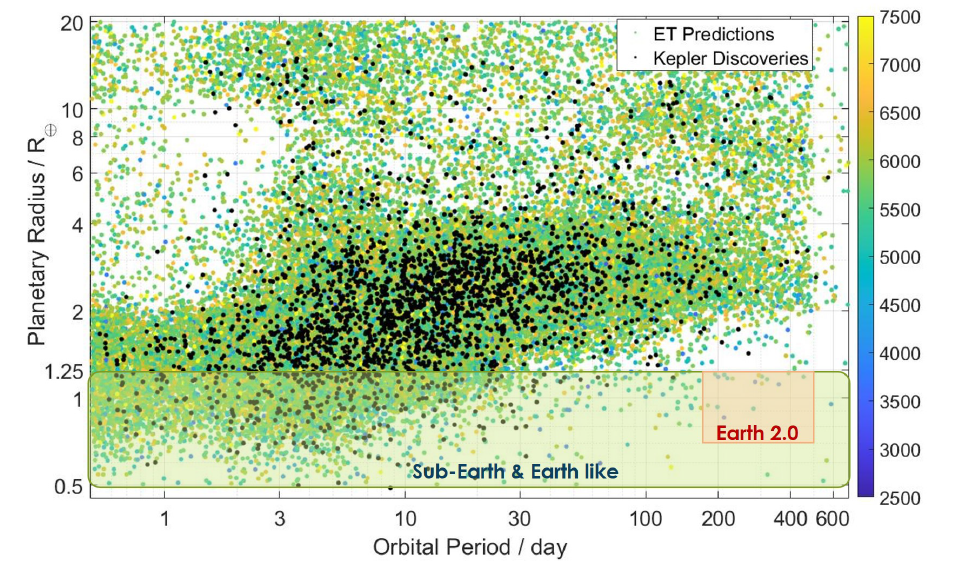
About the Author:
Ge Jian, a researcher at the Shanghai Astronomical Observatory of the Chinese Academy of Sciences (2020 to the present), has been a lifelong professor of Florida (2004-2020), and has long been engaged in actual measurement astronomy, astronomical technology and instrument research. The founder and chief scientist of the Chinese Academy of Sciences Space Pioneer Earth 2.0 Scientific Satellite Background Model, the founder and chief scientist of Dharma's neighboring livable planet patrol, the discoverer of the Wakken Starway Star Starway Star Starway Star Starway Star Starway Star, the Global The first Chinese scientist who found out -of -the -art planets, the International Sloan Digital Sky Phase III Marvels Multi -targeting the founder and chief scientist of the Outreach Planet Catrol. Zhang Hui, a researcher and doctoral supervisor of the Shanghai Astronomical Observatory of the Chinese Academy of Sciences. Mainly engaged in theoretical research related to the solar system and high -precision light metering of sky patrols. It has undertaken the "TiDO" (TIDO) large field of vision running and data processing of China Antarctic Sky Timeto Mirror (AST3) and Nanjing University. His work has been selected as "Top Ten Astronomical Science and Technology Progress in the country" in 2019 (China Antarctic Outer Planet Search); "(Third completed person). At present, he is the head of the scientific application system of the "Earth 2.0 (ET)" of the Chinese Academy of Sciences.
Deng Hongping, an associate researcher at the Shanghai Astronomical Observatory of the Chinese Academy of Sciences, obtained a doctorate degree from the University of Zurich in 2019, mainly engaged in theoretical research on planet formation.
references:
[1] M. Kunimoto J. M. Matthews, (2020), Searching the Entirety of KePler Data. II. Occurrence Rate Estimates, AJ, 159: 248;
[2] Grimm, S. L., Demory, B. Et Al., (2018), The Nature of the Trappist-Exoplanets, AA, 613,68;
[3] Ge, J., ZHANG, H., Zang, W.C. Et Al., (2022A). ET White Paper: to Find The First Earth 2.0, Arxiv: 2206.06693, https://arxiv.org/abs/2206.06693 ;;
[4] GE, J., ZHAN, H., H., H., Howell, S.B., The et Team, (2022B), the et mission to search for economic 2.0s, the inNovation, doi: https: // doi .org/10.1016/j.xinn.2022.100271
[5] Ge, J., ZHANG H. DENG, H.P., et al. (2022C), "The Earth 2.0 Space Mission for Detecting Earth-Like Planets Around Solar Type Stars", Proc. Spie, 12180-41, in Press Then, then, then
[6] https://en.wikipedia.org/wiki/space_interferometry_mission

- END -
Cover comment 丨 Selecting a civil servant should take the lead in protecting the rights and interests of the "non -full -time" graduates
□ Jiang YanzhengThe reporter sorted out the recent announcement of the selection of civil servants released in many places and found that many of them required a bachelor's degree in general univers...
The "Learning Difficulties" outpatient clinic opened by Shou'er
Doctor, our children have poor grades, and we can't go up in the score. I have been found by the teacher several times. When I heard that the first child opened a difficult outpatient clinic, we want...